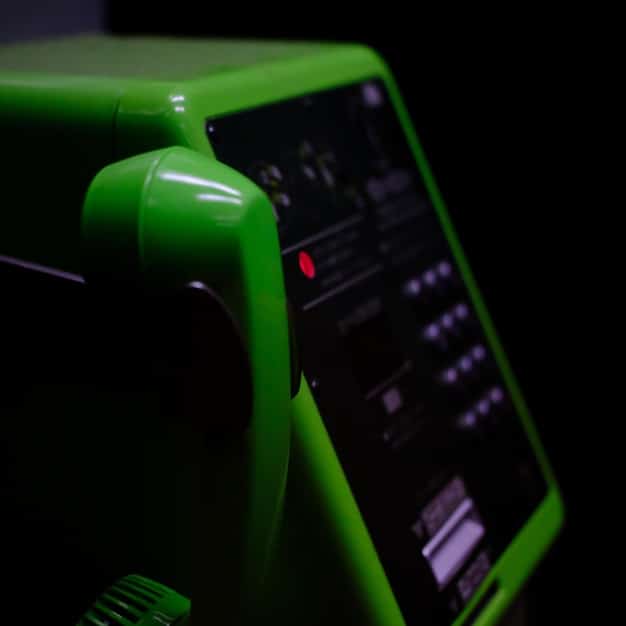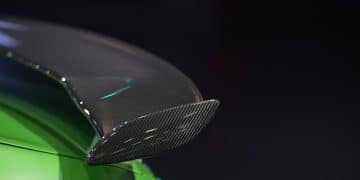Xbox Series X Refresh: Will Frame Rates Boost 15% by 2025?

The prospect of a new Xbox Series X refresh boosting frame rates by 15% in 2025 is currently speculative, with industry insiders and leaked documents suggesting potential hardware revisions focused more on efficiency and form factor than substantial performance gains, challenging widespread expectations among gamers.
The gaming world is abuzz with rumors and leaks about a potential mid-cycle refresh for the Xbox Series X. Amidst these whispers, one question dominates discussions: Will the new Xbox Series X refresh boost frame rates by 15% in 2025? This isn’t just about minor tweaks; it’s about a significant performance leap that could redefine the console gaming experience. As players eagerly await official announcements, the prospect of smoother gameplay and enhanced visuals from an upgraded console becomes a central point of speculation, inviting a deeper look into what such a refresh might entail.
The Rumor Mill: Origins of the 15% Frame Rate Boost Claim
The gaming community thrives on anticipation, and few topics generate as much excitement as potential console upgrades. The idea of a 15% frame rate boost for a refreshed Xbox Series X didn’t just appear out of thin air; it’s a claim rooted in a specific series of leaks and interpretations that have since fueled intense discussions and speculation across various platforms. Understanding the genesis of this particular statistic is crucial for evaluating its credibility.
The primary source for many of these rumors stems from documents leaked during the FTC vs. Microsoft legal battle concerning the Activision-Blizzard acquisition. These documents, originally not intended for public consumption, offered a glimpse into Microsoft’s internal roadmap for its gaming division. Among various hardware plans, references to a mid-cycle refresh for the current Xbox consoles caught the attention of enthusiasts and analysts alike.
Unpacking the Leaked Documents
The leaked information suggested that Microsoft was indeed planning a refresh, codenamed “Brooklin,” for the Xbox Series X. While these documents detailed various aspects, including a disc-less design, improved Wi-Fi, and a new controller, specific mentions of raw performance increases were less direct than many hoped. The 15% figure is largely an extrapolation, a best-case scenario interpretation of potential enhancements in GPU efficiency, clock speeds, and overall system optimization rather than an explicitly stated performance target for frame rate gains.
- Leaks indicated a focus on efficiency improvements.
- New manufacturing processes could yield better performance per watt.
- The “15%” figure largely arose from community speculation.
It’s important to note that internal projections and early development targets can change significantly before a product reaches market. Companies often explore various performance benchmarks and efficiency improvements during the R&D phase, and not all of these ultimately translate into the final consumer product. Therefore, while the leaked documents provided a rare window into Microsoft’s planning, the interpretation of a definitive 15% frame rate boost should be approached with caution.
Furthermore, the context of these leaks is critical. They represent a snapshot in time of internal discussions and potential strategies, which by their nature are subject to evolution. The information provided was not a formal announcement or a finalized product specification, leaving ample room for interpretation and, consequently, for misunderstandings or overestimations within the community.
In essence, the 15% frame rate boost figure for a 2025 Xbox Series X refresh is primarily a derived statistic, born from community analysis of fragmented, leaked internal documents. It reflects an optimistic outlook on how much performance could be squeezed out of a hardware revision focused on modernization and efficiency rather than a stated, explicit target from Microsoft itself. As such, it lays the groundwork for a debate on what is truly achievable and what remains wishful thinking.
“Project Brooklin”: What the Leaks Actually Show
The internet exploded with details from what has been dubbed “Project Brooklin,” a codename believed to represent the mid-generation refresh for the Xbox Series X. These leaks, while unofficial, offered an unprecedented look into Microsoft’s potential plans for its flagship console. Far from being a mere cosmetic update, the documents hinted at several significant changes, though the emphasis often differed from public speculation.
The most striking revelation from Project Brooklin was the planned disc-less design for the refreshed Series X. This aligns with a broader industry trend towards digital-only gaming, offering potentially sleeker industrial design and reduced manufacturing costs. Moving away from physical media could also streamline the user experience, making digital ownership the default for a new generation of console owners.
Key Features and Design Changes Uncovered
Beyond the disc drive removal, the leaked documents detailed other substantial improvements. Enhanced Wi-Fi 6E connectivity was a prominent feature, promising faster download speeds and more stable online gaming experiences. This would be a welcome upgrade for many gamers, especially those reliant on wireless connections for large game updates and competitive multiplayer. Additionally, a redesigned power supply was mentioned, suggesting a focus on improved energy efficiency and potentially a smaller form factor for the console itself.
- Disc-less design, signaling a digital-first future.
- Wi-Fi 6E for superior network performance.
- More efficient power supply, possibly leading to a smaller footprint.
- New, more haptic-focused controller.
The leaks also showcased a new controller, featuring haptic feedback and more precise button actions, aiming to enhance immersion and control. This evolution of the peripheral experience is a common strategy in console refreshes, often providing tangible benefits to gameplay enjoyment without requiring fundamental changes to the core console architecture. The focus here seems to be on tactile feedback and improved ergonomics, elements that directly impact player interaction.
However, what was notably less prominent in these leaks were explicit mentions of a significant raw performance increase. While efficiency improvements in the APU (Accelerated Processing Unit) were implied, such as through a move to a more advanced manufacturing process (e.g., a smaller nanometer node), the documents did not feature bold claims of a 15% frame rate boost. Instead, the emphasis seemed to be on refining the overall package: making it more efficient, quieter, faster in network capabilities, and more user-friendly.
Therefore, while Project Brooklin paints a picture of a modernized and enhanced Xbox Series X, the narrative around a substantial performance jump, particularly the 15% frame rate increase, appears to be an interpretation rather than a direct statement from the leaked materials. The improvements highlighted were primarily about quality of life, connectivity, and form factor, positioning the refresh as an evolution rather than a revolution in raw processing power. This distinction is crucial for setting realistic expectations among the gaming community.
Technical Feasibility: Analyzing Potential Hardware Upgrades
When discussions turn to console refreshes, the question of “how” a performance boost might be achieved is central. A 15% frame rate increase, while seemingly modest, would require notable advancements in hardware, especially within the bounds of a mid-generation update rather than a full console successor. To assess the technical feasibility of such a claim for the Xbox Series X refresh, we must look at the usual areas of improvement in console hardware.
Typically, mid-cycle refreshes focus on two main areas for performance gains: a die shrink and minor clock speed increases. A die shrink involves moving to a smaller manufacturing process node (e.g., from 7nm to 5nm or even 4nm). This allows for either more transistors in the same space, leading to more compute units, or the same number of transistors in a smaller, more power-efficient package. The latter often results in lower heat generation, which can then be leveraged for slightly higher clock speeds without excessive thermal throttling.

The Role of Die Shrink and Clock Speed
A transition to a more advanced manufacturing node by 2025 is certainly plausible. AMD, the designer of the Xbox Series X’s custom APU, routinely updates its manufacturing processes. Such a shift could provide a marginal increase in raw computational power for the GPU and CPU components. However, a 15% frame rate boost requires more than just a slight bump. It would imply a significant enhancement in either the number of compute units, a substantial increase in clock speeds, or a major architectural refinement. A 15% jump in frame rates often correlates to a similar jump in processing power, which is substantial for a refresh.
- Smaller manufacturing process (die shrink) for efficiency.
- Modest clock speed increases without significant thermal issues.
- Architectural refinements and optimization could play a role.
Another avenue for improvement lies in memory bandwidth. Faster RAM or a more optimized memory controller could reduce bottlenecks, allowing the GPU to process data more quickly. However, redesigning the memory subsystem extensively is costly and complex, making it less likely for a mid-cycle refresh that aims for cost-effectiveness and backward compatibility with existing games.
Moreover, the phrase “frame rate boost” itself is critical. It implies a direct improvement in how quickly frames are rendered. This typically comes from improved GPU performance. While CPU improvements can reduce bottlenecks in certain scenarios, especially open-world games, the GPU is the primary driver of frame rates. Therefore, achieving a 15% frame rate increase generally necessitates a 10-15% increase in effective GPU compute power.
Considering the typical scope of mid-generation console refreshes, pushing for a 15% frame rate boost might be ambitious. Historically, these refreshes often focus on smaller form factors, internal component efficiency, and modest performance bumps (e.g., 5-10% in specific scenarios, or improved efficiency leading to more stable performance rather than higher peak rates). Achieving a flat 15% across all titles would require a level of hardware upgrade that borders on a “Pro” model rather than a simple refresh, potentially cannibalizing sales of a full next-generation console later on.
Therefore, while technical advancements make some performance improvements feasible, the 15% frame rate boost, as a universal figure, remains a high bar for a standard mid-cycle refresh. It would indicate a more aggressive hardware upgrade strategy than typically observed, pointing towards a significant investment in chip redesign rather than mere optimization tricks.
Xbox’s Strategy: Efficiency vs. Raw Power
Microsoft’s approach to console refreshes has historically been a balance between maintaining accessibility and pushing technological boundaries. With the current generation, their strategy appears to lean heavily towards efficiency and user experience rather than solely chasing raw power. This philosophy is crucial when evaluating the likelihood of a 15% frame rate boost for the rumored Xbox Series X refresh.
The leaks surrounding “Project Brooklin” reinforce this perspective. The emphasis on a disc-less design, Wi-Fi 6E, and improved power efficiency points to a console that is more streamlined, more convenient, and potentially more economical to produce and operate. These are “quality of life” improvements that benefit the user without necessarily translating into a direct, measurable percentage increase in game frame rates. This is a common tactic, as it addresses consumer demands for convenience and better connectivity.
Past Precedents and Future Projections
Looking at past console generations, mid-cycle refreshes like the Xbox One S or PlayStation 4 Slim focused on smaller form factors, improved power efficiency, and sometimes minor 4K media capabilities, but rarely delivered significant game performance enhancements. The “Pro” versions, like the Xbox One X and PS4 Pro, were the ones that offered substantial raw power upgrades to target higher resolutions or frame rates. This historical context suggests that a standard “refresh” might not prioritize a 15% frame rate jump.
- Previous refreshes focused on form factor and efficiency.
- “Pro” models were typically for raw power gains.
- Microsoft may prioritize ecosystem integration and services.
Microsoft’s broader strategy, particularly with Game Pass and cloud gaming initiatives, indicates a desire to make gaming more accessible across various devices. This ecosystem-centric approach might mean that a powerful, expensive mid-cycle console refresh with a significant performance boost could be less of a priority than ensuring a smooth, integrated experience across all Xbox platforms. Investments in cloud infrastructure, developer tools, and expanding the Game Pass library might take precedence over a costly hardware overhaul for a single console variant.
Furthermore, an aggressive performance upgrade like a 15% frame rate boost could create a noticeable fragmentation within the Xbox gaming ecosystem. Developers would then have to optimize for two significantly different Series X performance tiers, potentially complicating game development and leading to inconsistent player experiences. Microsoft’s stated goal has often been to ensure a unified experience across its console family, making large performance discrepancies less desirable for a standard refresh cycle.
Ultimately, Microsoft’s strategy appears to be a sophisticated blend of hardware refinement, service expansion, and ecosystem integration. While a refreshed Xbox Series X will undoubtedly feature improvements, the core focus might be on making the console more appealing in terms of design, efficiency, and user experience, rather than an explicit and substantial raw performance leap that delivers a consistent 15% frame rate boost across all games. The narrative is often more about evolution in user experience than a revolution in raw processing power.
Impact on Gamers: Expectations vs. Reality
For many gamers, the promise of a console refresh, especially one rumored to boost frame rates, invokes significant excitement. The idea of playing existing and upcoming titles with greater fluidity and visual fidelity is a powerful draw. However, managing these expectations against the likely reality of a mid-cycle update is crucial, particularly when a specific figure like a “15% frame rate boost” is thrown into the mix.
If a 15% frame rate increase were universally applied to all games, the impact would be profound. Games struggling to maintain 60FPS would see more consistent performance, and titles targeting 30FPS might become playable at higher frame rates with minor compromises. This would enhance immersion and responsiveness, offering a genuinely improved gaming experience. However, the reality of achieving such a consistent boost across a diverse game library is complex.
Software Optimization and Developer Considerations
Even with hardware improvements, game performance is heavily reliant on software optimization. Developers tailor their games to specific hardware profiles. A refreshed console, even with a slightly more powerful APU, would still be based on the same core architecture. Developers would need to actively patch or update their games to take full advantage of any new capabilities. Without dedicated optimization, the benefits might be minimal, or only noticeable in a handful of titles.
- Developers need to optimize games for new hardware.
- Not all games will see a universal 15% increase.
- Focus could be on stability rather than peak frame rates.
Moreover, the potential 15% boost might not apply uniformly. Some games are already CPU-bound, meaning the GPU has spare capacity, but the CPU limits how fast frames can be prepared. If the refresh primarily boosts GPU performance, CPU-bound games might not see the full 15% improvement. Conversely, GPU-intensive games could benefit more significantly. This variability means that while some titles might feel noticeably better, others might show little to no difference in real-world performance.
Another crucial point is the target fidelity. Developers often target specific resolutions and frame rates. A refresh might allow them to achieve their existing targets more consistently, or potentially enable minor graphical enhancements while maintaining current frame rates. It’s less likely that a refresh would suddenly unlock entirely new graphical settings or vastly higher frame rates without corresponding development effort.
For gamers, the most realistic expectation from an Xbox Series X refresh, particularly one that focuses on efficiency and form factor as suggested by leaks, would be improved stability, quieter operation, and perhaps more consistent frame rates in demanding titles. A 15% increase in specific, optimized scenarios is plausible, but a blanket 15% boost across the entire library is an ambitious goal for a mid-cycle update. Setting realistic expectations will prevent disappointment and allow players to appreciate the more subtle, but equally valuable, improvements that a refresh might bring.
The 2025 Landscape: Console Generations and Competition
The year 2025 is not just another year on the calendar for the gaming industry; it’s a period poised at an interesting juncture, roughly five years into the current console generation. The competitive landscape, the pace of technological advancement, and the readiness for a true “next-gen” leap all factor into how a mid-cycle Xbox Series X refresh would perform and be perceived, especially concerning claims like a 15% frame rate boost.
By 2025, both Microsoft and Sony will likely be evaluating their strategies for the latter half of the generation. Sony, with the PlayStation 5, might also be considering its own refresh or “Pro” model, potentially setting a competitive benchmark. If both companies release refreshes, the performance gains and features will directly influence consumer choice and market perception. A 15% frame rate boost for Xbox could give it an edge, but only if Sony’s offering doesn’t match or exceed it.

The Pace of Technological Innovation
Technological innovations in GPU and CPU manufacturing typically happen in cycles. By 2025, newer manufacturing nodes (like 4nm or even 3nm) would be more mature, making a die shrink for the Xbox’s APU more feasible and cost-effective. However, significant architectural leaps that would enable a 15% frame rate boost without a major redesign are less common in such short cycles. Incremental improvements are the norm.
- Competitors like PlayStation will also likely refresh.
- New manufacturing nodes could offer efficiency.
- Focus may shift to preparing for the next full generation.
Furthermore, the gaming industry might be looking beyond just raw console power. Cloud gaming services, subscription models like Game Pass, and the growing importance of cross-platform play suggest a future where the console itself is just one piece of a larger gaming ecosystem. Microsoft’s investments in these areas indicate a strategic pivot that might de-emphasize a singular focus on console performance benchmarks for a refresh.
The timing of a refresh in 2025 also places it in a delicate position with respect to the next full console generation. A too-powerful refresh might shorten the lifespan of a hypothetical Xbox Series X successor, potentially confusing consumers and making them less likely to upgrade again in a few years. Therefore, balancing performance gains with market strategy is paramount. A 15% frame rate boost, while appealing, might be seen as either too much, too soon, or not enough, depending on where Microsoft positions its next major hardware leap.
In essence, the 2025 landscape will be defined by ongoing competition, evolving technological capabilities, and strategic decisions about the future of console gaming. A 15% frame rate boost for the Xbox Series X refresh, while technologically possible at some level, would need to align with Microsoft’s broader vision and the competitive dynamics of the time. It will be a tightrope walk between desirability and strategic positioning, rather than a simple hardware upgrade.
What the Future Holds: Predictions and Cautious Optimism
Navigating the realm of console refreshes is always a balance between leaked information, historical precedent, and the often-overwhelming hopes of the gaming community. When considering whether the Xbox Series X refresh in 2025 will deliver a 15% frame rate boost, it’s essential to temper excitement with a dose of realistic prediction. The future is rarely as clear-cut as early rumors suggest.
Based on the “Project Brooklin” leaks, the primary focus seems to be on refining the current Xbox Series X. This includes a sleek, disc-less design, enhanced wireless connectivity, and improved power efficiency. These are significant quality-of-life upgrades that make the console more appealing and user-friendly. While a move to a smaller manufacturing node (die shrink) for the APU is highly probable, which inherently brings some performance-per-watt benefits, this doesn’t automatically translate into a universal 15% frame rate increase across all titles.
Likely Scenarios for Performance Enhancements
What is more plausible is that any performance gains will be subtle and targeted. We might see improved frame rate stability in games that currently struggle to maintain their targets, especially in resolution modes. Some games might be able to run at slightly higher resolutions or with marginally better graphical settings while still holding a steady frame rate. The 15% figure, if it materializes at all, is likely to be a peak theoretical gain in very specific, highly optimized scenarios, rather than a consistent across-the-board boost for every game.
- Focus on stability and consistency rather than raw peak performance.
- Improved power efficiency and quieter operation.
- Greater integration with the Xbox ecosystem and services.
Microsoft’s overarching strategy for Xbox has increasingly been about services and accessibility – Game Pass, cloud gaming, and a unified ecosystem. A mid-cycle refresh would fit into this narrative by making the console itself a more polished, efficient, and interconnected gateway to their offerings. A massive raw power bump that drives up the console’s price and fragments the developer landscape might run contrary to this broader vision.
Therefore, a cautious outlook suggests that while the 2025 Xbox Series X refresh will be a compelling update, it might not be the raw performance powerhouse some expect. The emphasis will likely be on a more refined user experience, better efficiency, and a sleeker form factor. Any frame rate increases will probably be incremental, contributing to a smoother, more enjoyable, but not revolutionary, gaming experience. As always, official announcements will be the final word, but prudence dictates managing expectations. The focus is on a better Xbox Series X, not necessarily a 15% faster one in all regards.
| Key Point | Brief Description |
|---|---|
| 💡 Origin of the 15% Boost | The 15% frame rate boost claim originates from community interpretation of leaked Microsoft documents, not direct statements. |
| 🎮 Project Brooklin Details | Leaks reveal a disc-less design, Wi-Fi 6E, improved power, and a new controller, with less emphasis on raw performance. |
| ⚙️ Technical Feasibility | A 15% global boost is ambitious for a refresh; more likely are efficiency gains and stable performance in specific titles. |
| 🎯 Xbox’s Strategic Focus | Microsoft’s strategy prioritizes ecosystem integration and user experience over a significant, costly raw performance leap. |
Frequently Asked Questions About the Xbox Series X Refresh
While official confirmation is still pending from Microsoft, leaked documents strongly suggest a mid-cycle refresh is planned for 2025. These leaks, from internal Microsoft discussions, provide a detailed look into potential hardware revisions, though an explicit public announcement has not yet occurred, keeping the exact timing and features speculative.
“Project Brooklin” is the codename found in leaked documents for what is believed to be the refreshed Xbox Series X console. The leaks indicate a disc-less design, improved Wi-Fi 6E, a more efficient power supply, and a new controller. It represents Microsoft’s internal planning for its next hardware iteration, emphasizing efficiency and design.
Existing games might see benefits primarily in terms of increased stability and potentially more consistent frame rates, especially in graphically demanding titles. However, a significant boost like 15% across all titles would require specific game optimization for the refreshed hardware, which isn’t guaranteed for all older releases. The improvements are likely to be more incremental.
A die shrink involves manufacturing the processing unit (APU) on a smaller nanometer node. This typically leads to lower power consumption, reduced heat generation, and can allow for higher clock speeds or more transistors within the same thermal envelope. It contributes to better efficiency and potentially modest performance gains without requiring a full architectural overhaul.
While technically possible in highly optimized scenarios, a consistent 15% frame rate boost across all games is an ambitious target for a mid-cycle refresh. Historically, such refreshes focus more on efficiency, form factor, and quality-of-life improvements. Significant raw performance jumps are more common in “Pro” versions or true next-generation consoles.
Conclusion
The anticipation surrounding a potential Xbox Series X refresh in 2025, particularly the tantalizing claim of a 15% frame rate boost, highlights the gaming community’s constant desire for enhanced performance. While leaked documents have unveiled intriguing aspects of “Project Brooklin,” revealing a digital-only console with an emphasis on efficiency, connectivity, and a redesigned form factor, the direct evidence for a universal 15% frame rate surge remains largely based on optimistic interpretation rather than explicit technical specifications. Industry trends and Microsoft’s broader strategic focus on ecosystem and accessibility suggest that while performance refinements are probable, a revolutionary leap of this magnitude across all games might be an overestimation. The future of console gaming undoubtedly holds continued evolution, but players are encouraged to manage expectations and look forward to what will likely be a more refined and efficient, rather than dramatically more powerful, Xbox experience.





